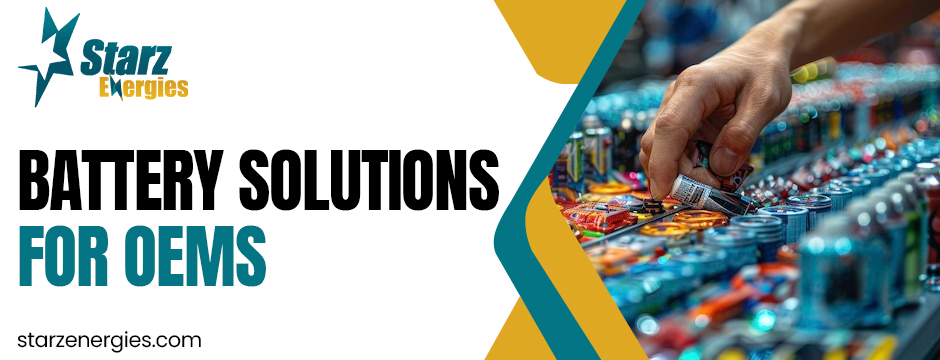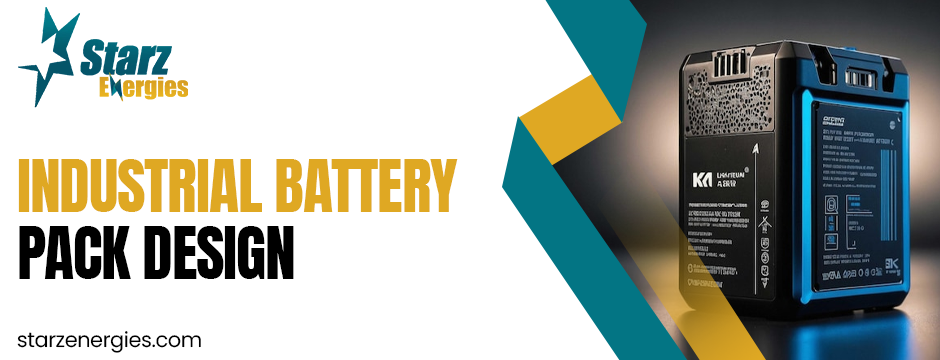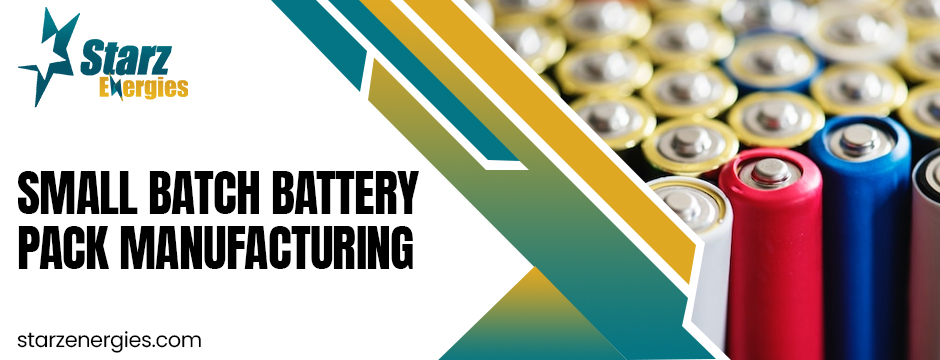
Blog
October 3, 2025
Top Considerations When Choosing Battery Solutions for OEMs in Industrial Applications
Selecting the right battery solutions for OEMs in industrial applications is a critical decision. Batteries are more than just a power source—they ensure machines, automation systems, and energy storage setups operate reliably. A poorly chosen battery can lead to downtime, safety risks, and increased maintenance costs. Industrial operations often run continuously, which means batteries must deliver consistent energy under varying loads. Factors like energy requirements, system compatibility, and environmental conditions play a major role in choosing the right solution.
Moreover, the right battery chemistry, intelligent monitoring, and thermal management are essential to maintain efficiency and longevity. Considering these aspects early can prevent operational disruptions and protect both equipment and personnel. This guide explores the top considerations that OEMs must evaluate when selecting battery solutions for industrial applications, helping businesses make informed decisions and ensure optimal performance.
Assessing Energy and Power Requirements
The first step in selecting battery solutions for OEMs is understanding the energy and power requirements of your machinery. Industrial equipment often operates 24/7. Any interruption in power can disrupt production and increase costs. Batteries must provide consistent energy and adapt to varying loads. Peak energy demands and average consumption need to be evaluated. This ensures that the battery performs reliably under all conditions.
Additionally, understanding duty cycles is essential. Some machines draw high current for short periods, while others require steady power for long periods. Matching the battery capacity to these needs avoids underperformance and reduces the risk of failure. Furthermore, proper assessment supports better integration with industrial systems. By analyzing energy and power requirements, OEMs can choose solutions that provide both efficiency and reliability.
Industrial battery pack design is a key factor to consider at this stage. The design should meet operational specifications while allowing for safe and efficient operation. A well-planned design ensures longer battery life and lower maintenance costs.

Selecting the Right Battery Chemistry
Different industrial applications have different battery chemistry needs. The choice of chemistry impacts performance, safety, and longevity. Lithium Iron Phosphate (LFP) batteries are often preferred in industrial settings. They provide long cycle life and excellent thermal stability. Li-ion batteries can offer higher energy density but may require more careful thermal management.
When evaluating battery solutions for OEMs, it is important to balance energy density, safety, and lifespan. Choosing the right chemistry ensures consistent performance and reduces operational risks. Furthermore, the chemistry influences maintenance schedules and environmental impact. LFP batteries, for example, are more stable and eco-friendly than some alternatives. Understanding these factors helps OEMs select a solution that meets both operational and environmental goals.
Importance of Battery Management Systems (BMS)
A Battery Management System (BMS) is essential for industrial battery solutions for OEMs. The BMS monitors voltage, temperature, and state-of-charge for each cell. It prevents overcharging, undercharging, and short circuits. These safety measures reduce the risk of damage and downtime.
A well-designed BMS also provides real-time diagnostics. Operators can detect issues early and take preventive action. Furthermore, BMS helps balance energy distribution among cells. This improves efficiency and extends the battery’s lifespan. Intelligent BMS features are especially important for industrial applications where reliability and safety are critical. By choosing battery solutions with a robust BMS, OEMs ensure consistent performance and operational security.
Thermal Management and Safety Considerations
Industrial operations often involve harsh conditions. Machinery generates significant heat, and batteries may overheat if left unchecked. Overheating can reduce performance, shorten lifespan, or even cause failure. Effective thermal management is therefore vital. It keeps battery cells operating within safe temperature ranges and ensures reliable energy delivery.
Safety features are equally important. Overvoltage protection, undervoltage protection, short-circuit protection, and temperature monitoring all help reduce operational risks. These systems prevent accidents, protect equipment, and maintain smooth industrial operations. Furthermore, combining thermal management with robust safety measures supports consistent performance during heavy or continuous usage. By prioritizing thermal management and safety, OEMs can reduce downtime, lower maintenance costs, and ensure the protection of both personnel and machinery.
Scalability and Modular Design
Industrial operations grow and evolve over time, and battery needs change with them. Battery solutions for OEMs should be both scalable and modular. Modular designs allow OEMs to expand energy storage in small steps without replacing the entire system. This flexibility is particularly useful for facilities planning future growth or adapting to changing production schedules.
Scalable solutions also simplify maintenance and reduce operational risk. Individual modules can be replaced, upgraded, or tested without affecting the whole system. Additionally, modular designs can support different industrial applications simultaneously. By choosing scalable battery solutions, OEMs can meet current needs while preparing for future demands. This approach ensures long-term reliability and cost efficiency for industrial energy management.
Customization and Small Batch Manufacturing
Each OEM faces unique challenges, machinery layouts, and operational needs. Customized battery solutions provide the flexibility required to fit these specific requirements. Tailored solutions improve integration, maximize efficiency, and ensure safe operation.
Small batch battery pack manufacturing is particularly beneficial for testing new designs before large-scale production. It allows OEMs to evaluate performance, identify potential issues, and fine-tune safety features. This reduces risk and ensures that the final solution meets operational expectations. Customized battery solutions also support diverse applications, from compact industrial equipment to larger machinery setups. Investing in tailored options ensures better reliability, smoother integration, and improved overall efficiency.

Monitoring and Diagnostic Capabilities
Real-time monitoring is essential for battery solutions in industrial applications. Advanced monitoring systems track voltage, temperature, and state-of-charge for each cell. This allows operators to quickly identify any irregularities that could affect performance.
Diagnostic tools take monitoring a step further. They provide actionable insights for predictive maintenance and proactive repairs. Early detection of potential issues prevents costly downtime and ensures uninterrupted operations. Furthermore, monitoring and diagnostics support energy optimization, helping industrial systems operate more efficiently and reduce waste. By integrating these capabilities, OEMs can maintain reliable performance, extend battery lifespan, and improve operational safety.
Integration with Existing Systems
Seamless integration with industrial machinery and control systems is critical. Battery solutions for OEMs must be compatible with existing voltage requirements, form factors, and interfaces. This ensures smooth energy delivery and prevents operational conflicts.
Proper integration also simplifies monitoring, diagnostics, and maintenance tasks. It allows operators to track performance and manage energy flow without additional technical complications. Industrial facilities with automation systems or renewable energy setups benefit the most from well-integrated batteries. Effective integration improves efficiency, reduces downtime, and enhances overall system reliability. By considering integration during selection, OEMs ensure that batteries work harmoniously within existing industrial infrastructure.
Environmental and Regulatory Compliance
Environmental and regulatory compliance is increasingly important in industrial operations. Battery solutions for OEMs must meet safety standards and environmental regulations. Lithium Iron Phosphate and other stable chemistries reduce environmental risk while maintaining performance.
Sustainable solutions also extend battery life and reduce waste. Efficient charging cycles and longer lifespans help lower the environmental footprint of industrial energy systems. Companies that prioritize compliance demonstrate responsible operations and align with broader sustainability goals. In addition, meeting regulatory standards ensures smooth approvals and avoids potential fines or operational delays. Considering environmental factors in battery selection supports both operational efficiency and corporate responsibility.
Lifecycle Support and Maintenance
Maintenance directly impacts battery reliability and performance. Industrial battery solutions for OEMs should provide full lifecycle support. Preventive maintenance, diagnostics, and repair options all contribute to longer-lasting, safer batteries.
Regular monitoring and maintenance allow operators to detect issues early. Predictive maintenance tools help plan repairs before problems escalate, preventing unexpected downtime. Proper lifecycle management reduces long-term costs and improves operational efficiency. Additionally, supported batteries are easier to upgrade or replace, minimizing disruptions to industrial processes. By choosing solutions with strong lifecycle support, OEMs ensure consistent performance and better return on investment.
Cost-Effectiveness and Long-Term Value
While upfront cost is not the only consideration, cost-effectiveness is critical for industrial operations. Investing in reliable battery solutions for OEMs reduces energy waste, maintenance expenses, and unplanned downtime.
High-quality batteries last longer and provide consistent performance, lowering the need for frequent replacements. Long-term reliability contributes to operational savings and reduces disruption risks. Evaluating energy efficiency, safety features, scalability, and integration ensures that the investment delivers maximum value over time. By selecting battery solutions that balance performance and durability, OEMs can achieve better productivity, lower operational risk, and sustainable long-term value.
Conclusion
Choosing the right battery solutions for OEMs in industrial applications requires careful planning and consideration. Factors such as energy requirements, battery chemistry, BMS, thermal management, scalability, integration, and maintenance play a crucial role in ensuring reliability and efficiency. By evaluating these aspects, industrial operators can reduce downtime, lower maintenance costs, and extend the lifespan of their energy storage systems. Partnering with an experienced provider like Starz Energies ensures that OEMs receive tailored, high-performance battery solutions designed to meet industrial demands. Explore Starz Energies today to find solutions that enhance operational efficiency, improve safety, and future-proof your industrial operations.
About Starz Energies
Starz Energies is the first lithium-ion battery manufacturer in Tunisia, and in North Africa, to venture in energy storage solutions. Starz is applying its R&D expertise to provide more efficient, greener, and more affordable lithium-ion batteries.
Learn MoreShare This Post
Related Post
September 26, 2025 • 9 minutes read
How Battery Thermal Management Systems Extend the Lifespan of Lithium-Ion Packs
September 19, 2025 • 6 minutes read
Modular Design Approaches in BMS Board Production for Utility-Scale Projects
September 12, 2025 • 8 minutes read
How Hybrid Battery Packs Improve Efficiency in Renewable Energy Systems
